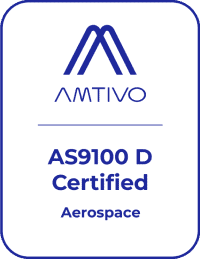How to Eliminate Noise and Vibration From eVTOLs?
Leave a CommentNoise, vibration, and harshness (NVH) is a key concern that influences driver and passenger experience in the automotive industry. NVH is a challenging quality to engineer because it is subjective from person to person, as well as the context of the passenger experience. NVH is also an important topic for the aerospace industry. Not only do vibration and noise levels affect passenger flight experience, but they also must comply with local sound pollution restrictions.
NVH is of particular concern for eVTOL (electric vertical take-off and landing) vehicles, which are preparing to launch air taxi services into urban settings in the near future. Learn more as to why NVH is such an important topic to consider when engineering eVTOL vehicles.
Why Do Noise, Vibration, and Harshness Matter for eVTOLs?
At best, excessive noise and vibration are annoying, but prolonged exposure to relatively tolerable levels of noise and vibration could lead to health problems—like stress, fatigue, headache, and hearing loss. Sustained high levels of noise and vibration could cause machine issues including loss of horsepower, fatigue cracks, and instrument failure. In any vehicle, the common sources of noise and vibrations are the engine, transmission, and propulsion system. Thus, designing a new system requires careful considerations and mitigation plans to eliminate undesirable noise and vibration, especially for mass produced products.
Typical solutions involve isolating the source of excitation, applying dampeners, and detuning structural resonances. However, these fixes typically require adding more mass and weight to the aircraft or redesigning its structure (trading off the performance). Solving NVH issues can quickly spiral into expensive endeavors if not thought through carefully in the design stage, and the problem could scale massively with mass produced products.
Eliminating the Noise & Vibration from the Source
The electric motors for the propulsion systems in eVTOLs and electric aircraft are the subject of interest. Their design and the manufacturing plan are critical to managing noise and vibrations. Emerging prototypes of the aircraft show the use of radial/axial flux types. Some hybrid designs plan to use onboard power generators, which are driven by sustainable alternative fuel (SAF) powered turbines.
Any rotating part is subject to problems relating to unbalance; uneven mass distribution around the axis of rotation. A common cause of unbalance is due to manufacturing deviations, but in-situ deformation can be a more relevant cause for high-performance lightweight rotors for aircraft propulsion systems. A well-designed rotor balancing and blade moment weighing strategy—paired with a detailed understanding of how rotors behave in certain operating conditions—can reduce noise, vibration, and harshness from their source.
Choosing an Industry Leader in Test Devices by SCHENCK
Leveraging spin test data, and the true expertise in rotor balance engineering, our customers can feel confident in managing their NVH concerns. SCHENCK USA offers cutting edge testing expertise and industry-leading balancing equipment backed by over 50 years of experience.
Among our range of products and capabilities, we perform spin testing, blade moment weighing, and rotor balancing, which are all essential to the success of eVTOLs and other e-propulsion systems. Our reputation for innovation, safety, and reliability is proven, and we have been helping clients in the aerospace, energy storage, power generation, air handling, automotive, medical devices, and electronics industries with the toughest rotational testing challenges.
These industries rely on us for quality testing products and services. To learn how we can serve your industry, contact us today.



